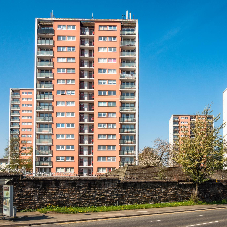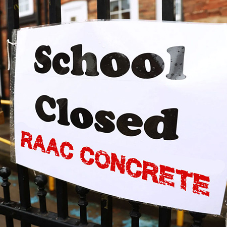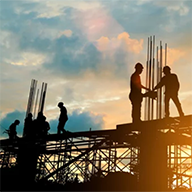Every home or building has its own needs depending on a lot of different factors, but all of them have one thing in common: they all need a roof. Aesthetics aside, the roof structure is a key component and its exact design depends on a variety of factors including the type and style of building. Among the different types of roof available, there generally are two prominent choices when it comes to planning an extension or construction project. These are flat roofing and pitched roofing, each having their own advantages and disadvantages.
Flat Roofs
A flat roof is actually a slight misconception; in order to enable rainwater to drain away, flat roofs have a slight pitch of a few degrees; basically, a horizontal base fixed to the building's ceiling joists and then covered with a waterproof membrane. Known for their space saving, compact design, flat roofs are particularly good for smaller structures, such as extensions, dormer, porches and garages. They are more economical to construct, given the reduced areas involved and the shorter construction time. They are also easier to climb up on and inspect if (when) the need arises.
However, as this RICS article points out, flat roofs generally require a greater degree of maintenance, and flat roof drainage is historically not as effective as traditional pitched roofs and standing water (ponding) can be an issue if falls are not adequate. RICS also points out that the life span of a flat roof is not as long as a traditional pitched roof and that repairs can be more expensive than traditional pitched roofs.
Pitched Roofs
A pitched roof has at least two slopes that rise to meet at a peak, allowing for usable space in the loft area, either as storage or even as additional living space. The building can also benefit from added insulation and so rooms will not be afflicted by extremes of temperature that can come with a flat roof installation. Known perhaps mostly for its traditional aesthetics, pitched roofs are very efficient in water evacuation: the roof works to direct the water away from the home and leaves little chance of standing water finding a home above the house.
Unfortunately, pitched roofs also come with a hefty price tag; their complex design and significant labour and material costs mean that pitched roofs can be far more expensive than other options. They also can’t be used for buildings with too many multiple levels or complex plans as it just wouldn’t be practical. And, whereas traditional-looking, you can’t do very much with a pitched roof in regards to architecture: you’re pretty much set with the one design.
When choosing between the two, there are several factors to consider. Materials to be used, type of building, purpose of roof, aesthetic and architectural qualities, cost, maintenance, weather and geographical location, durability, and performance just to name a few. It’s a tough call, but all these elements together should help you weight up the pros and cons, and get you a roof over your head.
You might be interested in:
Easy Roof System: Low Pitch Slates and Plain Tiles from Permavent
185 GRP (Fibreglass) Roofing System from Polyroof Products
Single ply roof membranes from SIG Design Technology
Domestic Roofing from Topseal Systems Limited
Related Blog Articles



crop192.png)












